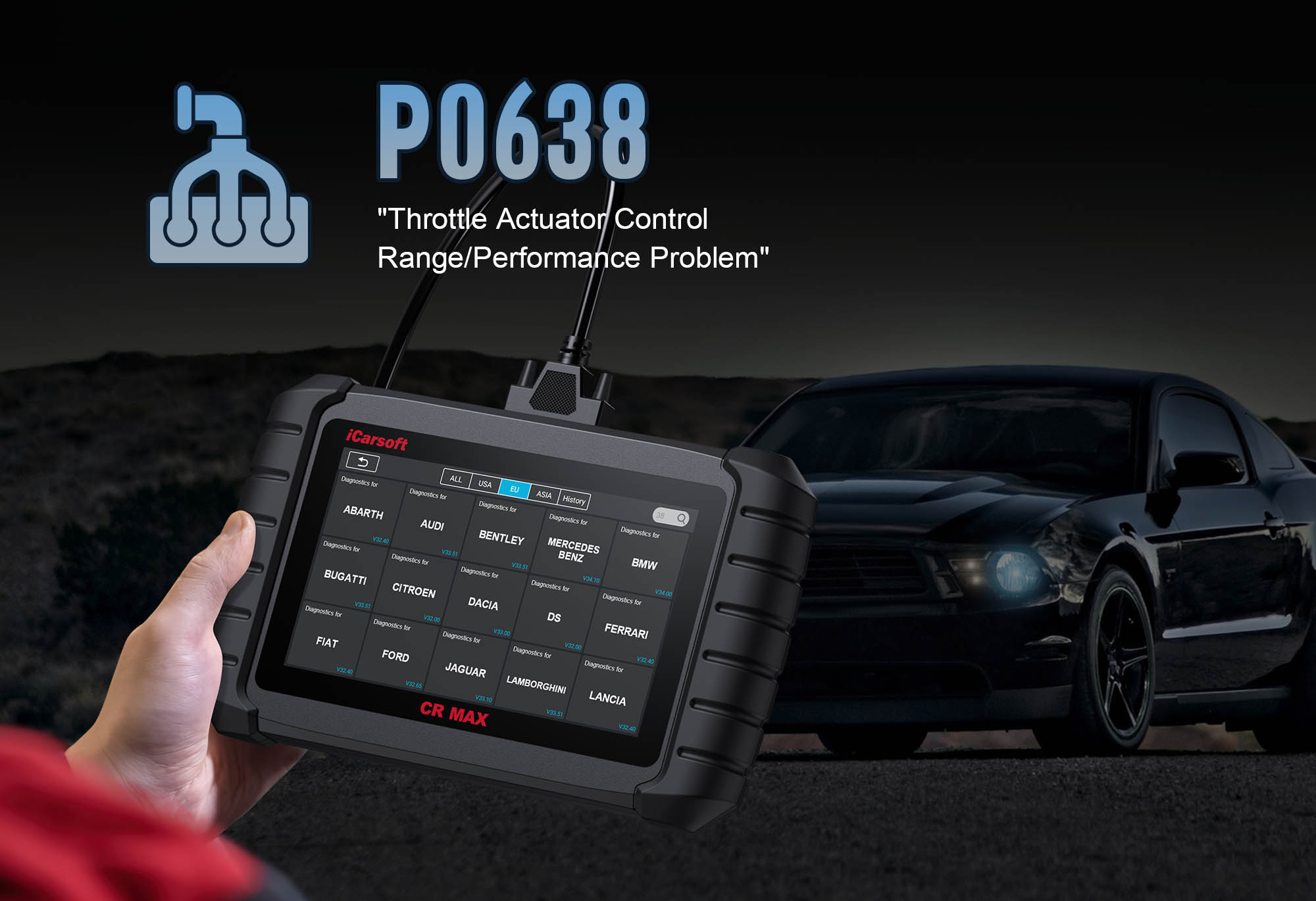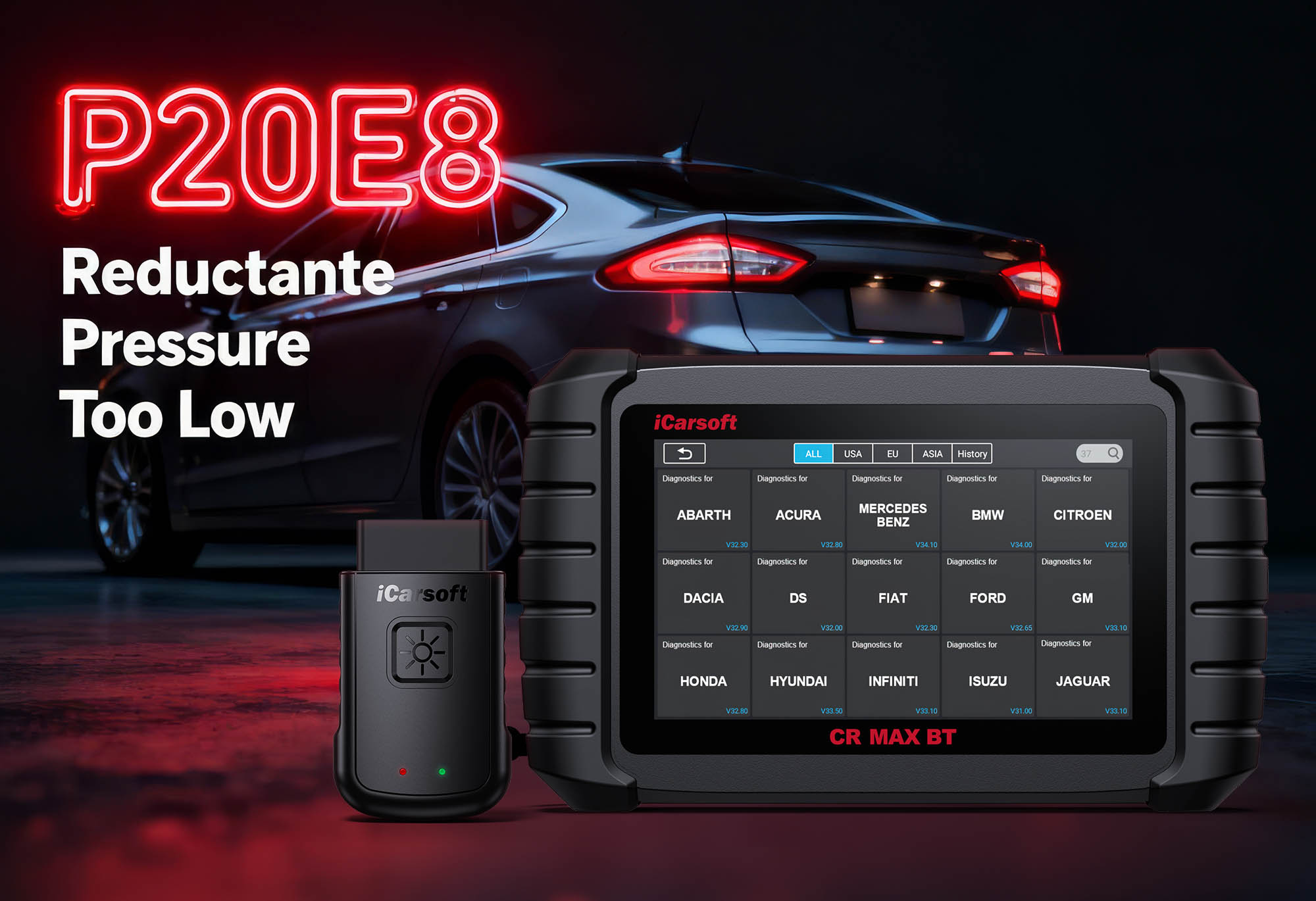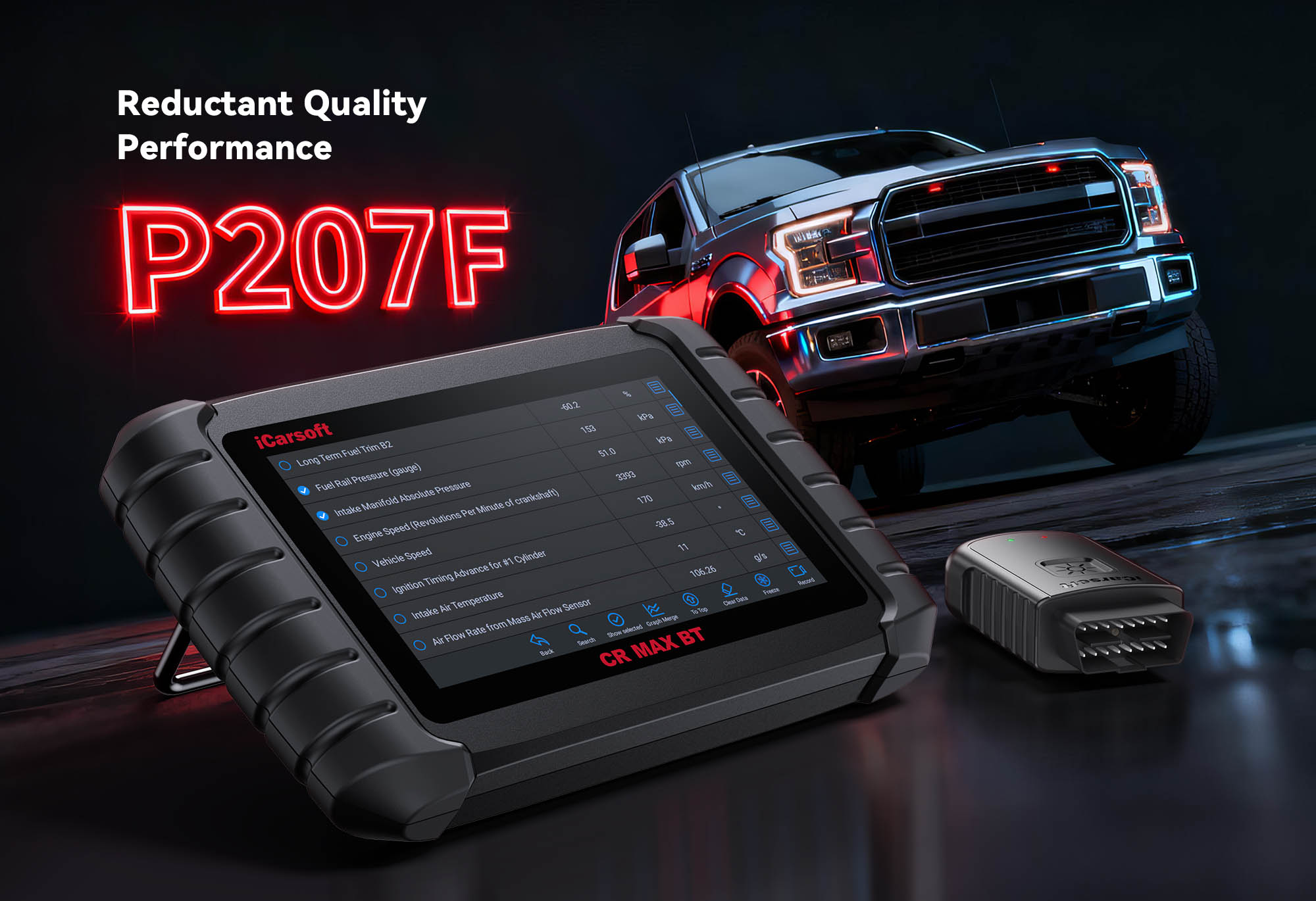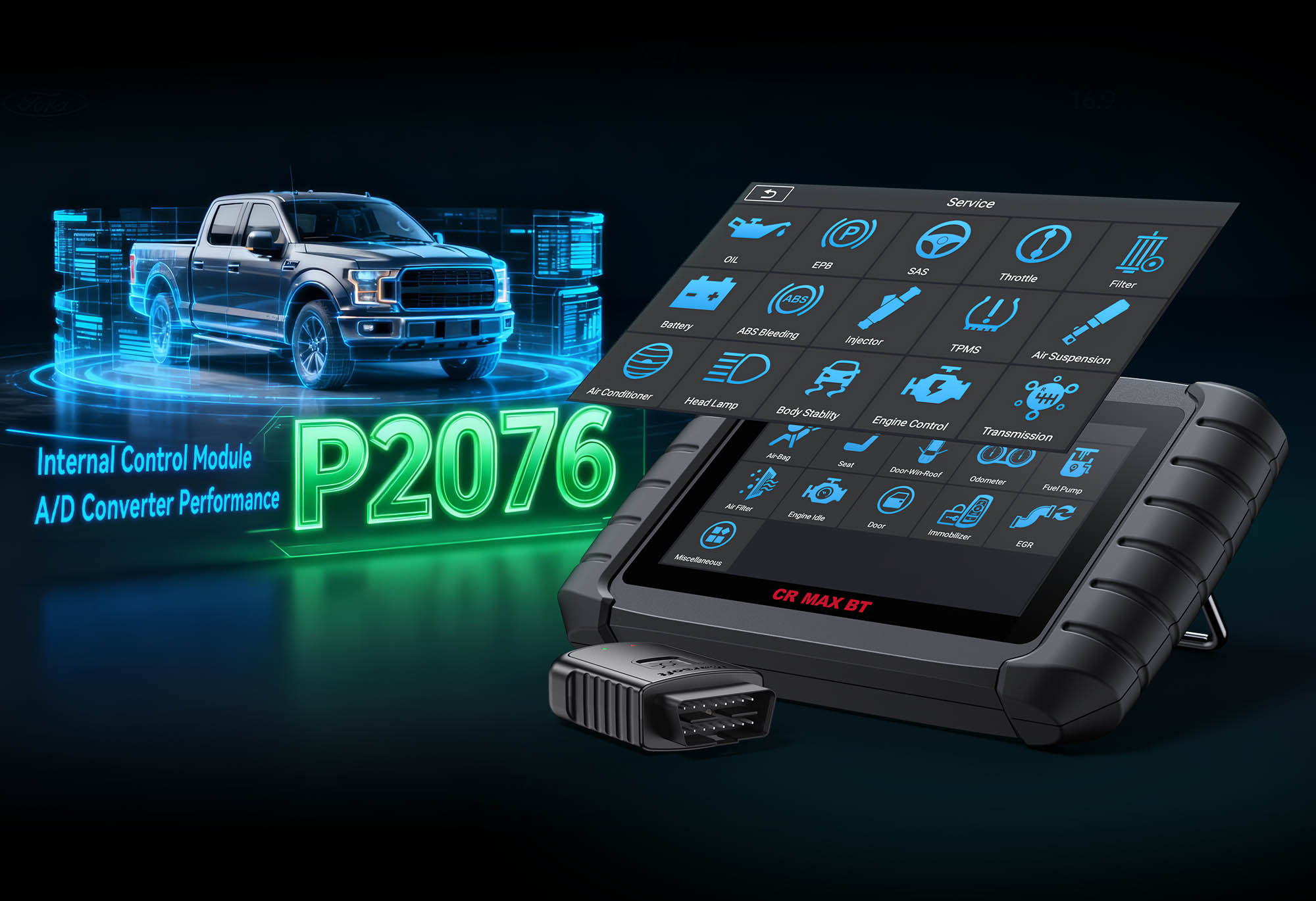When the P0638 error code appears, drivers often face frustrating issues: reduced power, limp mode, or even stalling. This code directly targets your vehicle’s electronic throttle control system— a critical component for smooth engine operation. In this guide, we’ll break down what P0638 means, its symptoms and causes, step-by-step diagnosis, and how to fix it—with a focus on the CR MAX Throttle Body Cleaner, a fast, reliable solution for common P0638 triggers like carbon buildup.
What Does Code P0638 Mean?
The P0638 diagnostic trouble code is defined as “Throttle Actuator Control Range/Performance (Bank 1)”. It triggers when the Powertrain Control Module (PCM/ECM) detects a mismatch between the expected throttle actuator position and the actual position reported by sensors.
Here’s a simpler breakdown:
-
The throttle actuator (part of the electronic throttle body) controls how much air enters the engine—regulated by the PCM based on driver input (gas pedal pressure).
-
Sensors (like the Throttle Position Sensor, TPS) send real-time position data to the PCM.
-
When the PCM commands the actuator to move to a specific position (e.g., 20% open) but sensors report it’s not reaching that position (or moving too slowly), it stores P0638 and illuminates the Check Engine Light.
Unlike mechanical throttle systems (cable-driven), electronic throttles rely entirely on sensors and actuators—making P0638 a direct signal of a disrupted electronic or mechanical link.
Why It Matters: Symptoms and Severity
P0638 is not a “minor” code—ignoring it can lead to unsafe drivability and further engine damage. Watch for these key symptoms:
Illuminated Check Engine Light
The first and most consistent warning— the light stays on until the root cause is fixed and the code is cleared.
Engine Rough Running or Hesitation
The engine stutters or feels unresponsive when accelerating, especially under load (e.g., climbing hills). This happens because the throttle can’t open/close smoothly to match air demand.
Limp Mode Activation
To protect the engine, the PCM may trigger “limp mode”—limiting throttle response to 50% or less. This prevents high-speed driving and forces you to address the issue.
Stalling
In severe cases, the throttle actuator may get stuck closed (restricting air) or open (flooding the engine)—leading to unexpected stalling, especially at idle or low speeds.
Expert Note (per KBB): P0638 is classified as a “serious” code. Prolonged driving with this fault can damage the catalytic converter (from unbalanced air-fuel mixtures) or leave you stranded due to stalling. Address it promptly.
Top Causes Behind P0638
P0638 stems from either mechanical issues (throttle body) or electronic faults (sensors/wiring). Below are the most common culprits, ordered by likelihood:
Dirty/Clogged Throttle Body
The #1 cause—carbon buildup, gum, or varnish on the throttle plate or bore prevents smooth movement. Over time, this restricts the actuator’s range, triggering P0638.
Faulty Throttle Body Assembly
Internal mechanical failure (e.g., stuck actuator motor, broken gears) or electronic faults in the throttle body’s built-in sensors can cause position mismatches.
Malfunctioning Throttle Position Sensor (TPS)
The TPS reports the throttle’s actual position to the PCM. A faulty TPS sends inaccurate voltage signals, leading the PCM to misinterpret the actuator’s position.
Wiring or Electrical Issues
Loose, corroded, or frayed wires between the PCM, throttle body, and TPS disrupt signal flow. Short circuits or broken ground connections also cause false position readings.
PCM/ECM Faults (Rare)
In rare cases, a faulty PCM may send incorrect commands to the throttle actuator. This is usually a last resort—only suspect it after ruling out all other components.
Step-by-Step: How to Diagnose P0638
Diagnosing P0638 requires a systematic approach—start with simple, low-cost fixes (like cleaning) before replacing parts. Here’s how to do it:
-
1. Scan for Codes & Analyze Freeze-Frame Data
-
Use an OBD-II scanner (e.g., iCarsoft CR MAX) to read P0638 and any related codes (e.g., P0121 for “TPS Range/Performance,” P0122 for “TPS Low Voltage”). Address related codes first—they often share root causes.
-
Check freeze-frame data (if available) to see when P0638 triggered (e.g., “Idle,” “Acceleration”)—this narrows down whether the issue is at rest or under load.
-
2. Test Drive to Observe Behavior
-
Take a short test drive (5–10 miles) and note:
-
When hesitation/limp mode occurs (idle, acceleration, high speed).
-
If the throttle feels “sticky” or unresponsive.
-
Intermittent issues (e.g., only when cold) often point to carbon buildup or loose wiring.
-
3. Visual Inspection of Throttle Body, TPS, and Wiring
-
Locate Components: The throttle body is mounted on the intake manifold; the TPS is usually attached to the throttle body (check your vehicle’s service manual or scanner’s component guide).
-
Inspect for:
-
Throttle Body: Visible carbon buildup around the throttle plate (open the plate gently with a screwdriver to check).
-
TPS: Cracks, oil residue, or loose mounting bolts.
-
Wiring: Frayed insulation, corroded connectors, or loose terminals. Clean connectors with electrical contact cleaner.
-
4. Clean the Throttle Body (Critical Step!)
Carbon buildup is the #1 P0638 trigger—use CR MAX Throttle Body Cleaner to dissolve deposits safely:
-
Disconnect the negative battery cable (safety first) and remove the air intake tube connected to the throttle body.
-
Have a helper hold the throttle plate open (or use a zip tie to secure it—never force it).
-
Spray CR MAX Throttle Body Cleaner directly onto the throttle plate and bore. Use a soft-bristle brush to gently scrub away carbon deposits—avoid scratching metal or plastic surfaces.
-
Wipe away dissolved residue with a clean, lint-free cloth. Let the throttle body dry completely (5–10 minutes) to prevent electrical damage.
-
Reconnect the air intake tube and battery cable.
Pro Tip: Never use carburetor cleaner or brake cleaner on electronic throttle bodies—these harsh chemicals damage sensors and plastic components. CR MAX Throttle Body Cleaner is formulated for safe use on electronic systems.
-
5. Test TPS and Throttle Actuator Function
-
TPS Voltage Test: Use a multimeter to check TPS voltage (refer to OEM specs, usually 0.5V–4.5V). With the key on (engine off), slowly open the throttle—voltage should rise smoothly. Erratic readings = faulty TPS.
-
Actuator Test (with Scanner): Use a scanner like the iCarsoft CR MAX to run bi-directional tests (under “Special Functions > Throttle Tests”). Command the throttle to open/close to specific positions—if it doesn’t respond, the actuator or throttle body is faulty.
-
6. Test Wiring Continuity (if Issues Persist)
-
Set the multimeter to continuity mode.
-
Disconnect the throttle body and PCM connectors. Check continuity between corresponding wires—no beep = broken wire (repair or replace).
-
Check for short circuits by testing continuity between wires and the vehicle’s frame—beep = short (fix insulation).
-
7. Rule Out PCM Faults (Last Resort)
-
If all other components test good, consult a professional technician. They’ll use specialized tools to reflash the PCM (update firmware) or test for internal PCM failures. PCM replacement is costly and rarely needed for P0638.
Recommended Product: CR MAX Throttle Body Cleaner
Prevention Tips: Keep P0638 at Bay
Avoid future P0638 issues with these simple maintenance habits:
Regular Throttle Body Cleaning
Clean the throttle body every 30,000–50,000 miles (or 2–3 years) with CR MAX Throttle Body Cleaner—even if no codes appear. This prevents buildup from causing problems.
Address Minor Codes Early
Fix TPS-related codes (e.g., P0121, P0122) immediately—they often progress to P0638 if ignored.
Inspect Wiring Regularly
Check throttle body and TPS wiring during oil changes—clean connectors with dielectric grease to prevent corrosion.
Use Quality Fuel & Oil
Premium fuel and synthetic oil reduce carbon buildup in the throttle body and engine—lowering P0638 risk.
Summary Table: P0638 Diagnosis & Fix Steps
|
Step
|
Action
|
Goal
|
|
1
|
Scan for P0638 + related codes; check freeze-frame data
|
Identify if other components (e.g., TPS) are faulty
|
|
2
|
Test drive to observe hesitation/limp mode
|
Pinpoint when the issue occurs (idle/acceleration)
|
|
3
|
Visually inspect throttle body, TPS, and wiring
|
Spot obvious issues (buildup, corrosion, frayed wires)
|
|
4
|
Clean throttle body with CR MAX Throttle Body Cleaner
|
Remove carbon buildup (top P0638 cause)
|
|
5
|
Test TPS voltage and actuator function
|
Confirm TPS/actuator are working correctly
|
|
6
|
Repair/replace faulty parts; reset code
|
Restore throttle control and clear P0638
|
Final Thoughts
Error code P0638 demands immediate attention—but it doesn’t have to be costly. Start with the simplest, most common fix: cleaning the throttle body with CR MAX Throttle Body Cleaner. This addresses the #1 trigger (carbon buildup) and often clears P0638 without replacing parts.
If cleaning doesn’t work, move to testing the TPS and wiring—these are also affordable fixes. Reserve throttle body or PCM replacement for last, as they’re more expensive and less likely to be the cause.
With the right approach and tools like CR MAX Throttle Body Cleaner, you can resolve P0638 quickly, restore smooth engine performance, and avoid costly shop visits. Don’t let a throttle actuator issue keep you off the road—take action today.





